Environmental Science Chapter 7
1/31
Earn XP
Description and Tags
Climate and Biodiversity
Name | Mastery | Learn | Test | Matching | Spaced |
|---|
No study sessions yet.
32 Terms
Core Case Study: African Savannas
The earth has a great diversity of habitats
Terrestrial (land-based): grasslands, forests, and deserts
Aquatic (water-based): oceans, coral reefs, lakes, and rivers
Differences in climate determines differences in biomes (i.e., tropical climates and savannas)
7.1 What Factors Influence Climate?
Key factors that influence an area’s climate are incoming solar energy, the earth’s rotation, global patterns of air and water movement, gases in the atmosphere, and the earth’s surface features.
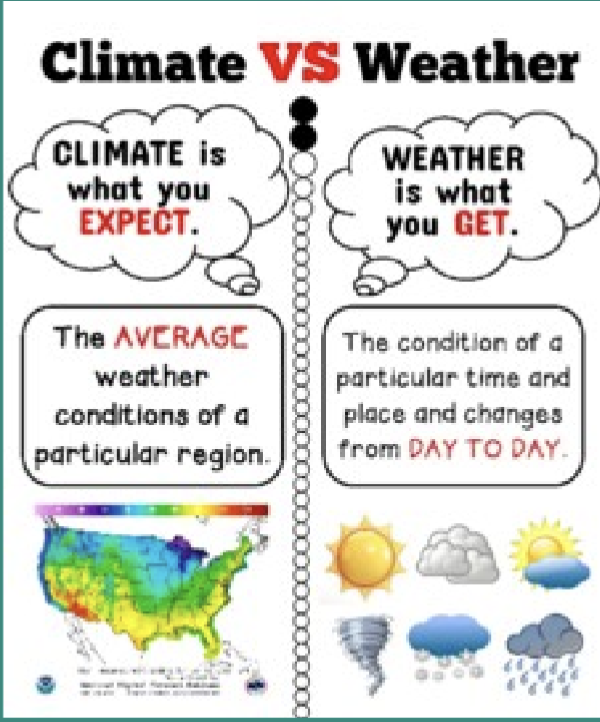
Weather vs Climate
Weather
A set of physical conditions of the lower atmosphere that includes temperature, precipitation, humidity, wind speed, cloud cover, and other factors that occur in a given area over a period of hours or days.
Climate
The pattern of atmospheric conditions in a given area over periods ranging from at least three decades to thousands of years.
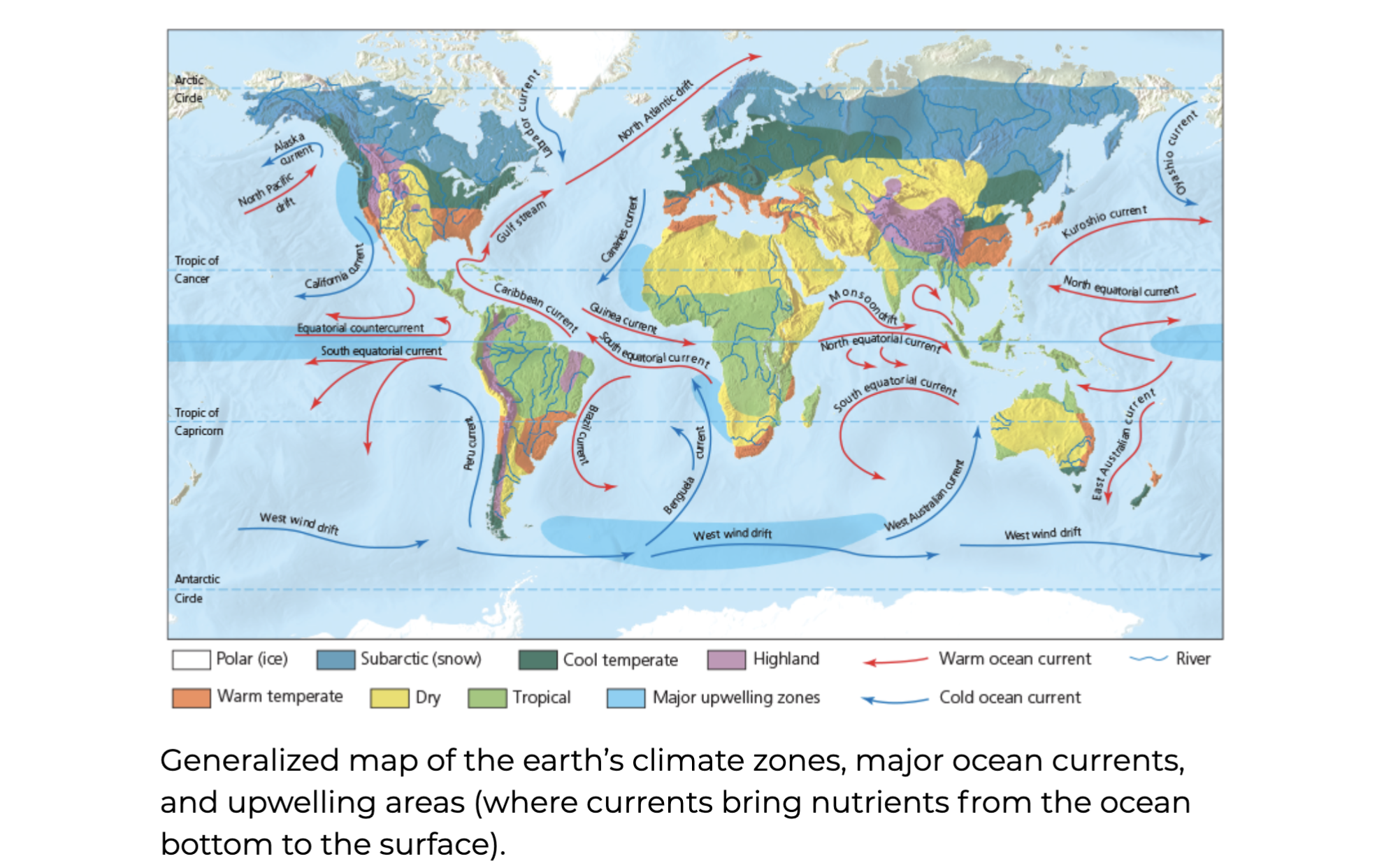
The Earth Has Many Different Climates
Keys factors that influence an area’s climate are
incoming solar energy
the earth’s rotation
global patterns of air and water movements
greenhouse gases in the atmosphere
topography (earth’s surface features)
Several factors help determine regional climates. They include
greenhouse gases
the cyclical movement of air in convection cells driven by solar energy
uneven heating of the earth’s surface by the sun
patterns of global air circulation that distribute heat and
precipitation unevenly
ocean currents
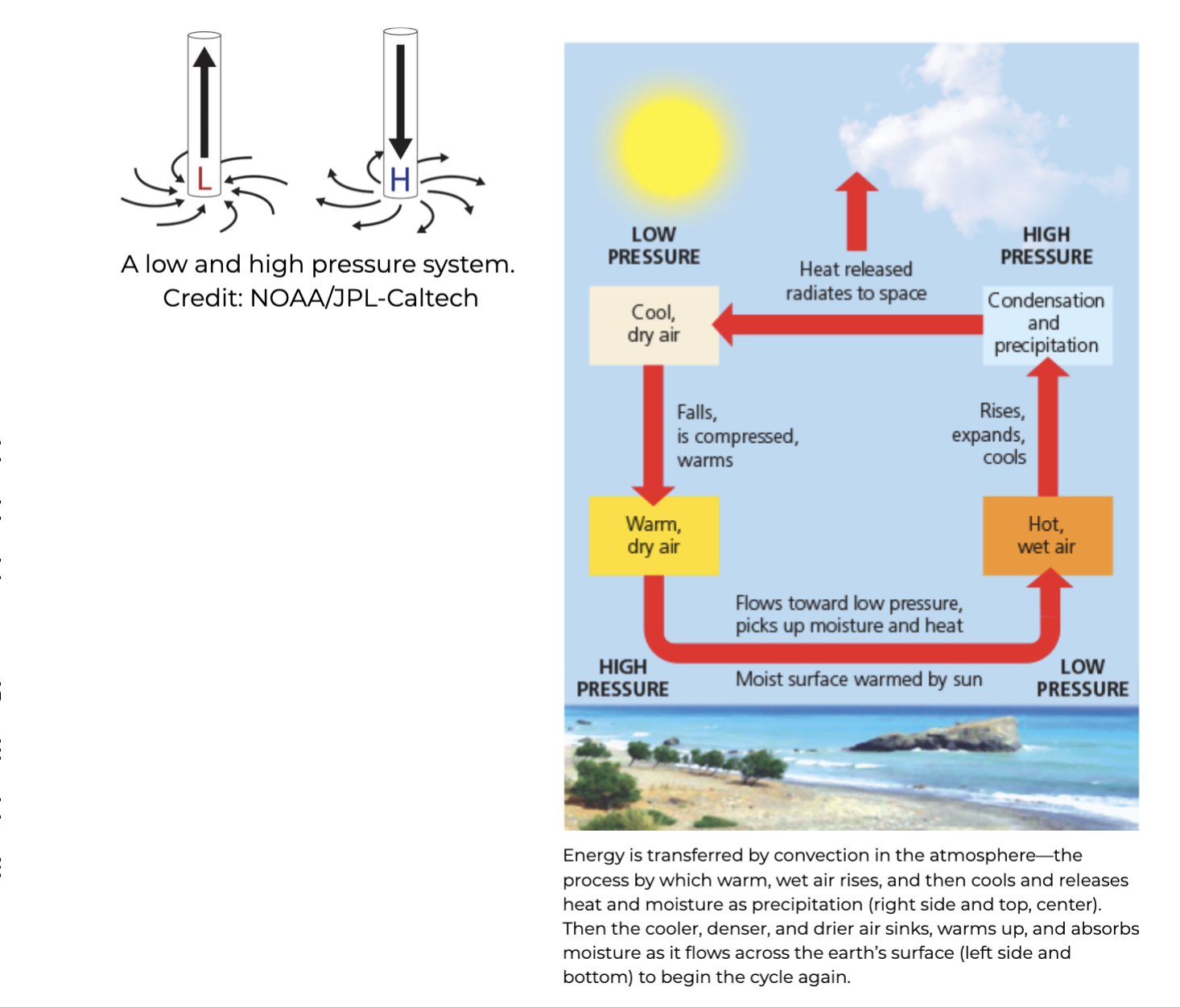
Pressure Systems
High Pressure
Winds blow away from high pressure. Air from higher in the atmosphere sinks down to fill the space left as air is blown outward.
Low Pressure
Winds blow towards the low pressure, and the air rises in the atmosphere. As the air rises, the water vapor within it condenses, forming clouds and often precipitation.
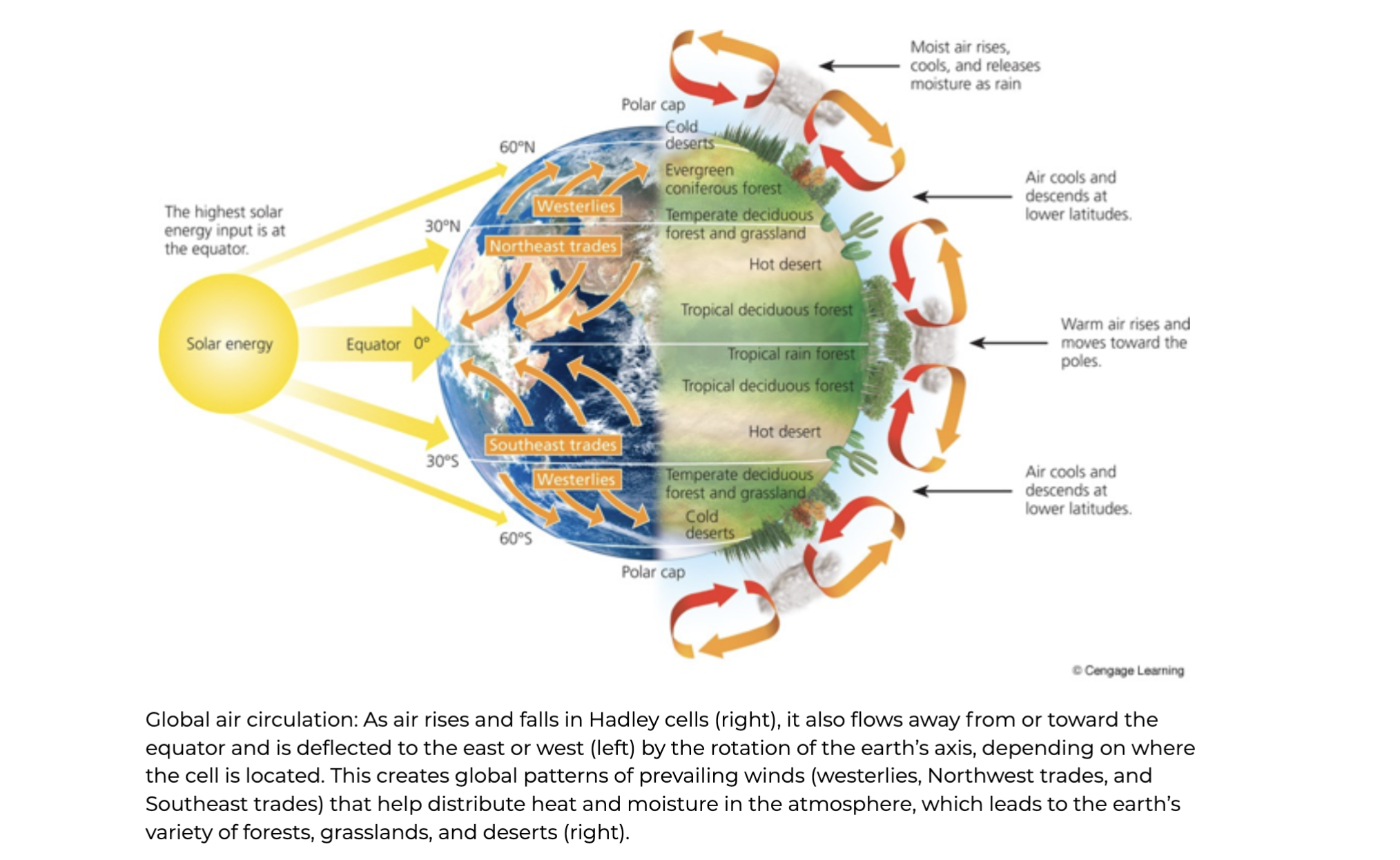
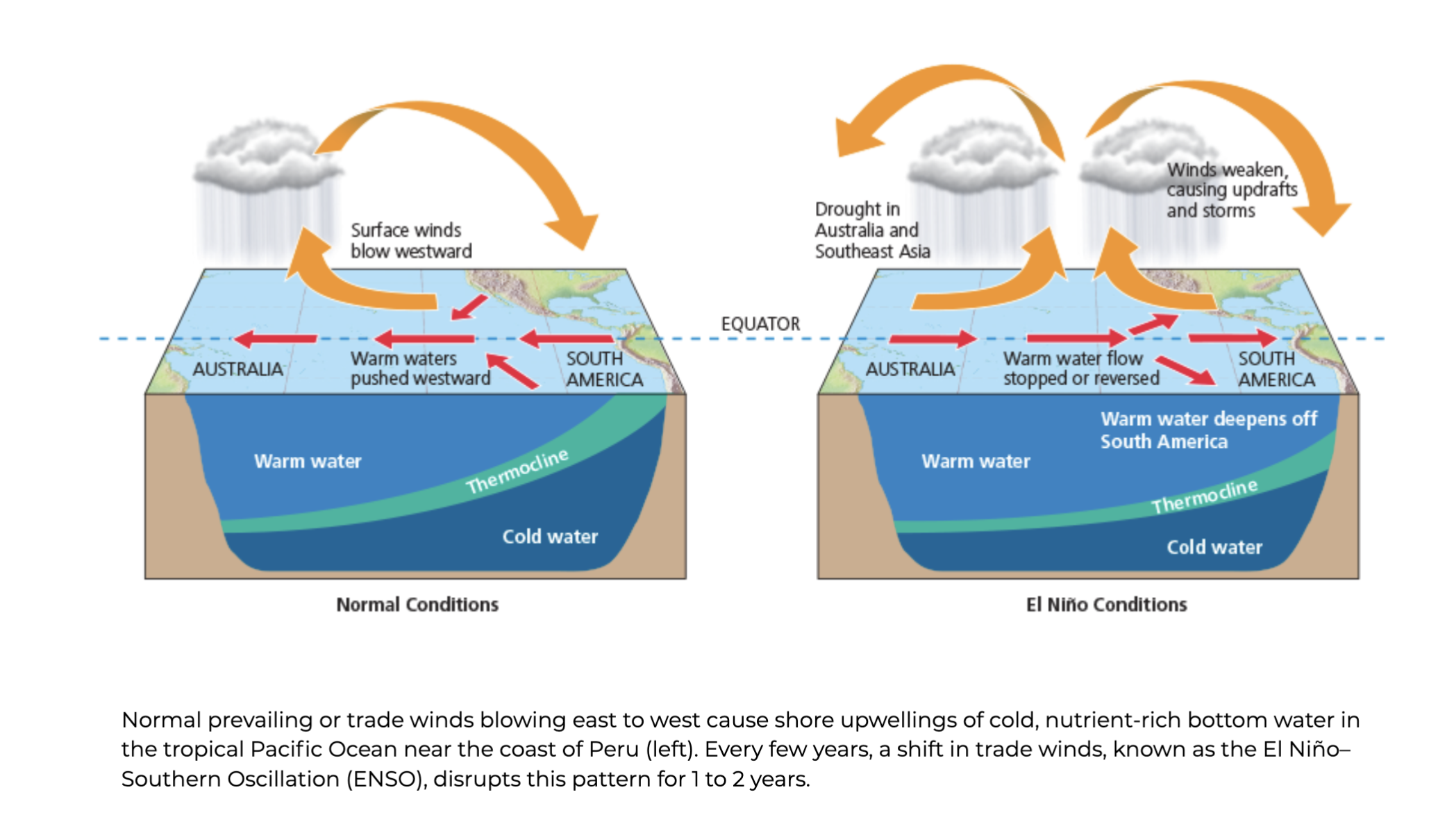
The Oceans and the Atmosphere are Strongly Linked
The oceans and the atmosphere are strongly linked in two ways:
ocean currents are driven partly by winds in the atmosphere
heat from the oceans affects atmospheric circulation.
Example: El Niño–Southern Oscillation or ENSO
When prevailing winds in the tropical Pacific Ocean weaken and change direction, altering large-scale weather patterns for one or two years over at least two-thirds of the planet
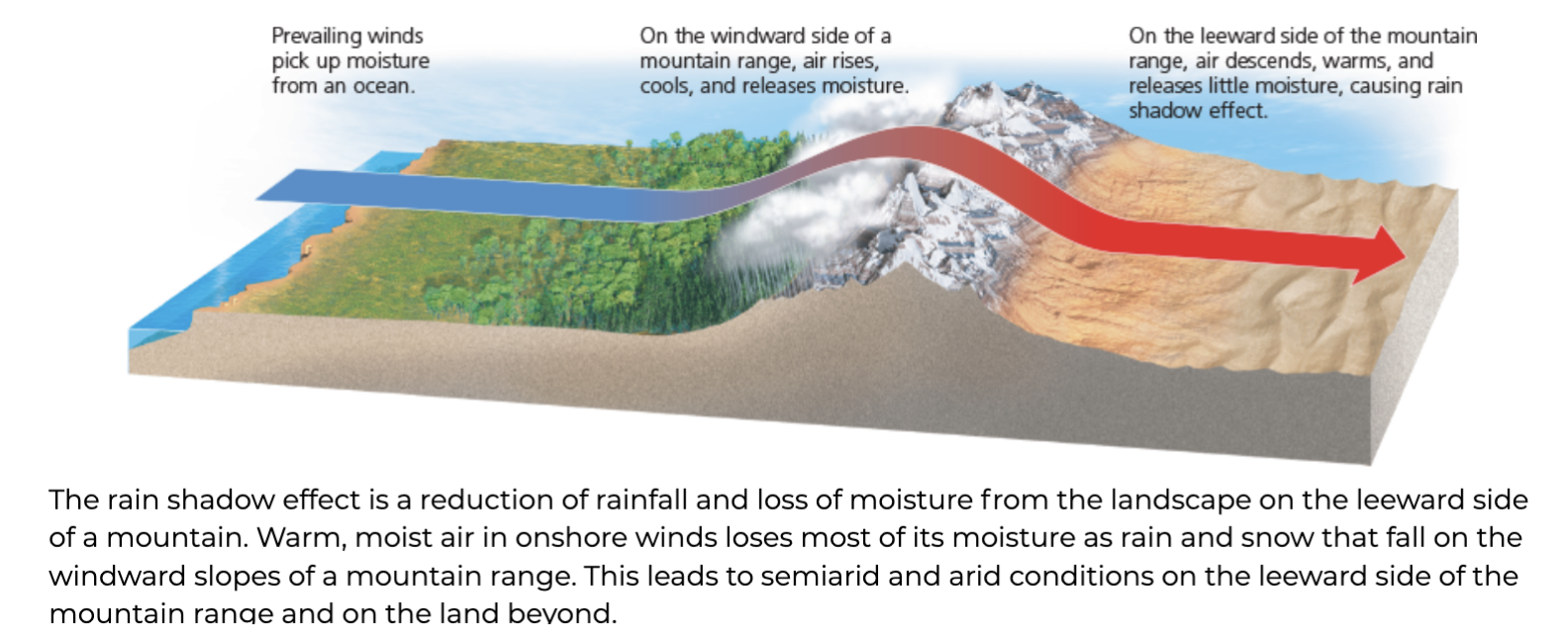
Earth’s Surface Features Affect Local Climates
Mountains can interrupt the flow of winds and affect storms.
Rain shadow effect: an area of dry land caused when atmospheric moisture is intercepted before it reaches
Cities can also have microclimates as they absorb heat.
7.2. What Are the Major Terrestrial Ecosystems and How Are Human Activities Affecting Them?
Desert, grassland, and forest biomes can be tropical, temperate, or cold depending on their climate and location.
Human activities are disrupting ecosystem and economic services provided by many of the earth’s deserts, grasslands, forests, and mountains.
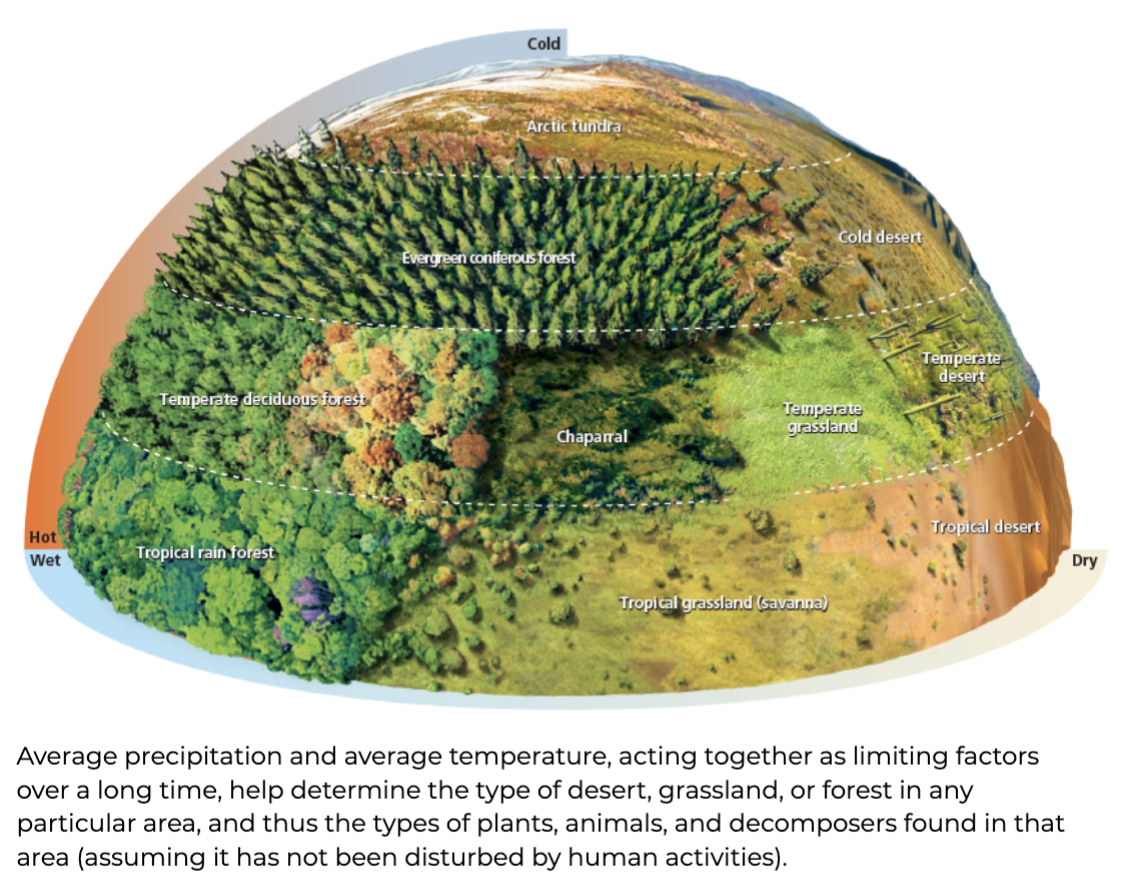
Climate Affects Where Terrestrial Organisms Can Live
Climate and vegetation vary according to latitude and elevation.
Biomes—large terrestrial regions, each characterized by a particular type of climate and a certain combination of dominant plant life.
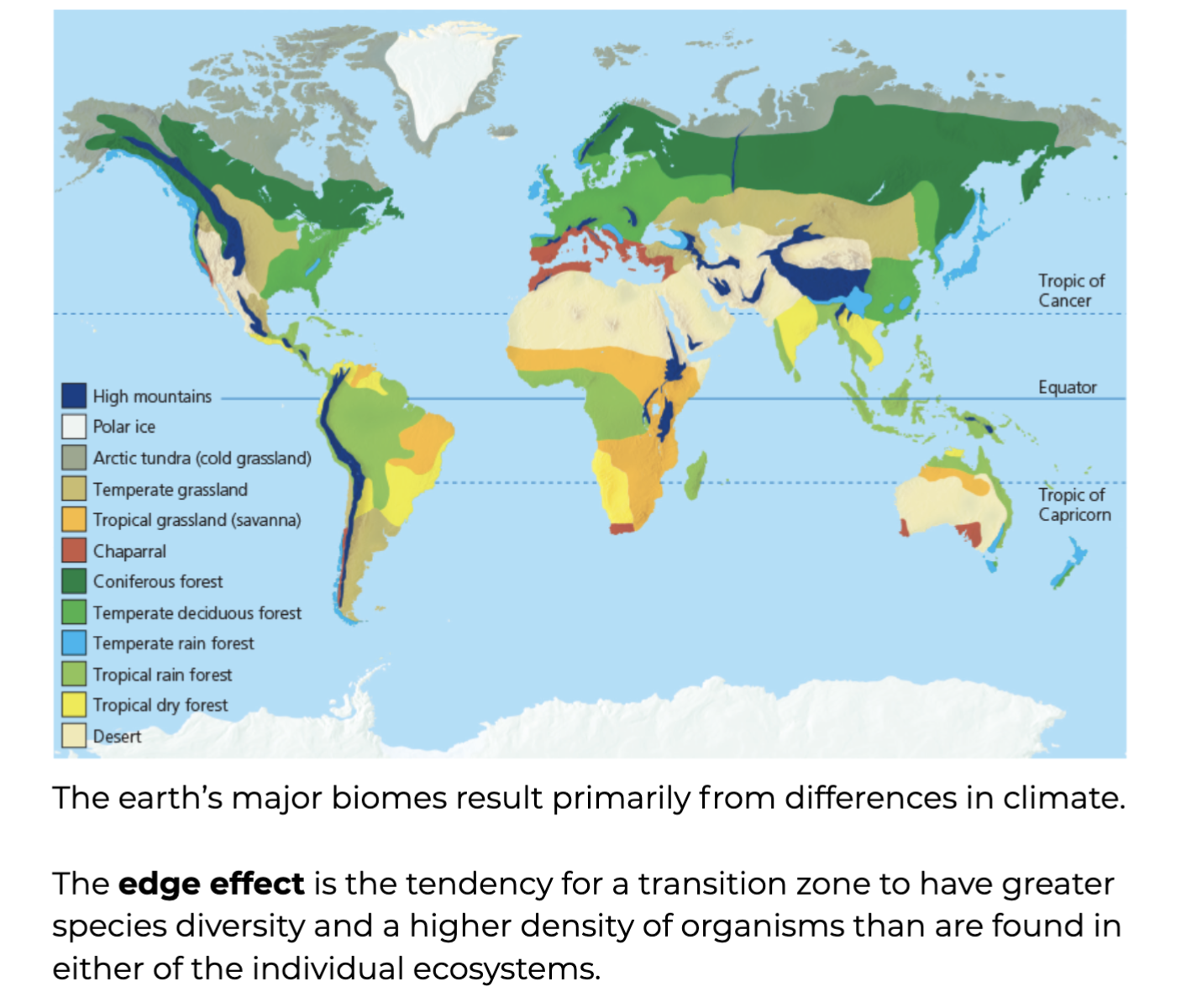
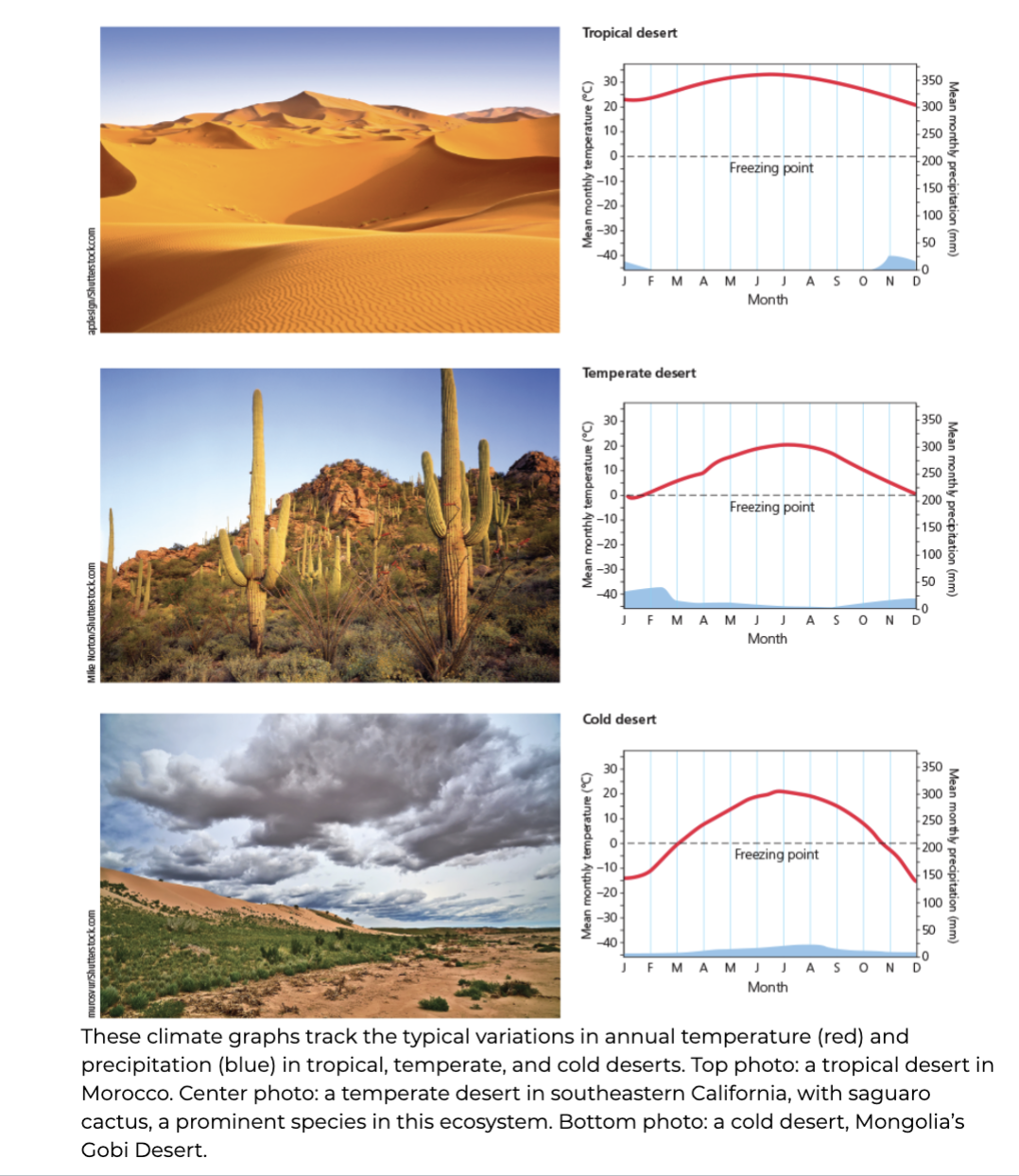
Deserts
The three major types of deserts
Tropical - hot and dry most of the year
Temperate - daytime temperatures are high in summer and low in winter and there is moderate precipitation
Cold - winters are cold, summers are warm or hot, and precipitation is low
Desert ecosystems are vulnerable to disruption because
they have slow plant growth,
low species diversity,
slow nutrient cycling due to low bacterial
activity in the soils,
and little water.
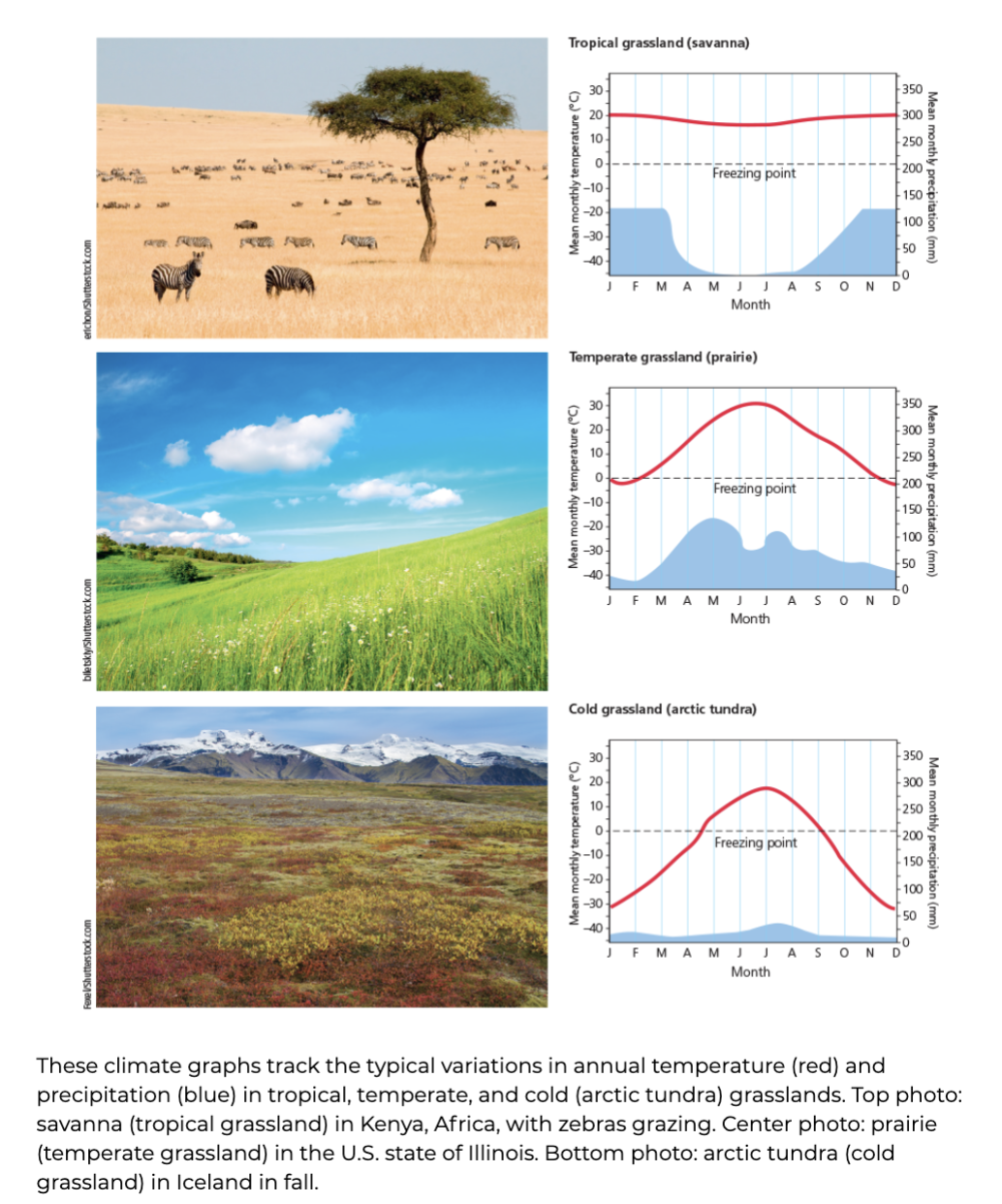
Grasslands
The three major types of grasslands
Tropical - widely scattered clumps of trees and usually has warm temperatures year-round with alternating dry and wet seasons
Temperate - Winters can be bitterly cold and summers are hot and dry. Annual precipitation is sparse and falls unevenly throughout the year
Cold - Winters are long with few hours of daylight, and the scant precipitation falls primarily as snow.
Vulnerabilities
Farming
Overgrazing
Illegal hunting
Climate change
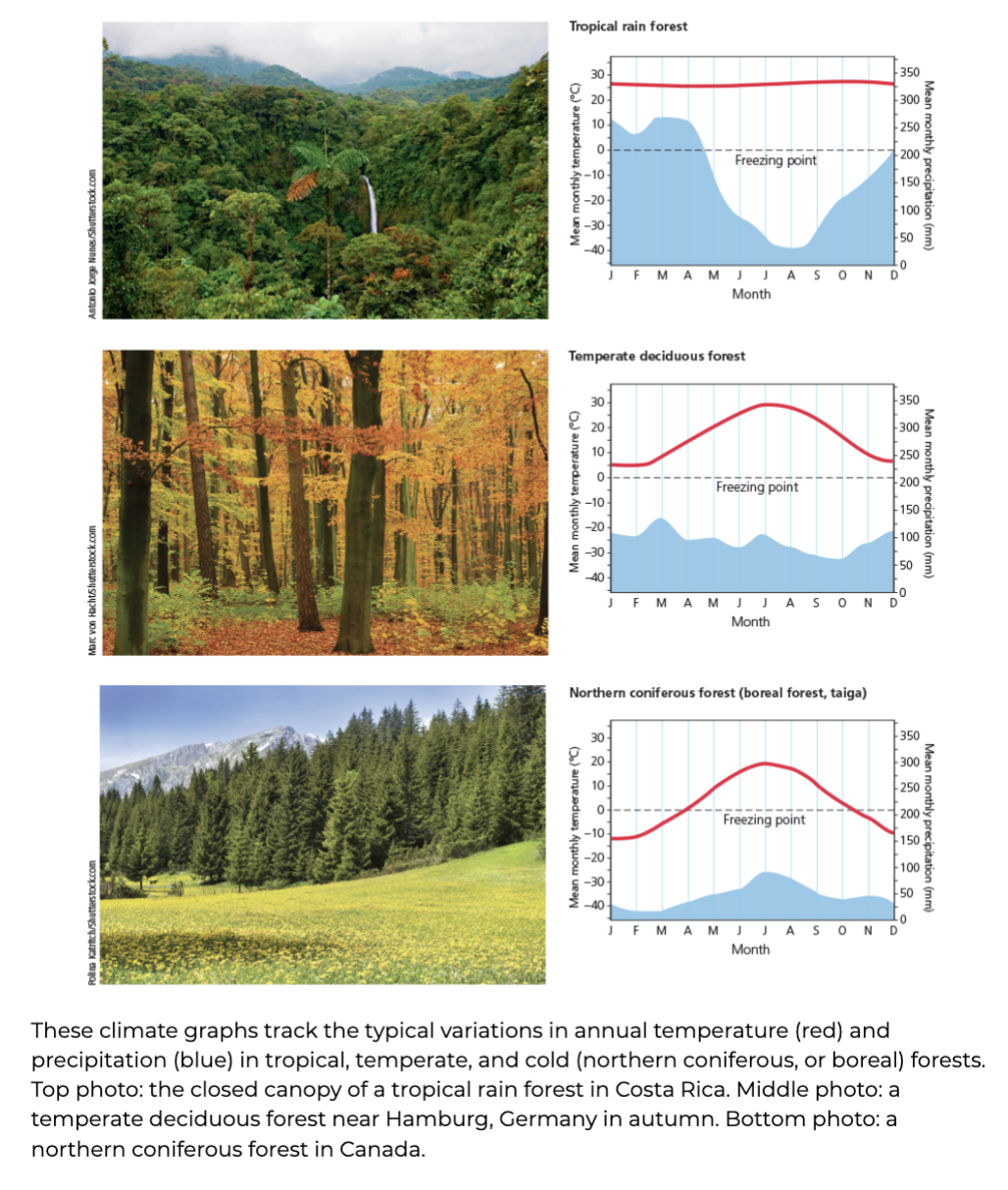
Forests
The three major types of forests
Tropical - year-round, warm temperatures, high humidity, and almost daily heavy rainfall
Temperate - warm summers, cold winters, and abundant precipitation—rain in summer and snow in winter months
Cold - subarctic, cold, and moist climate, winters are long and extremely cold. Summers are short, with cool to warm temperatures.
Vulnerabilities
Deforestation
Climate change
Land use change
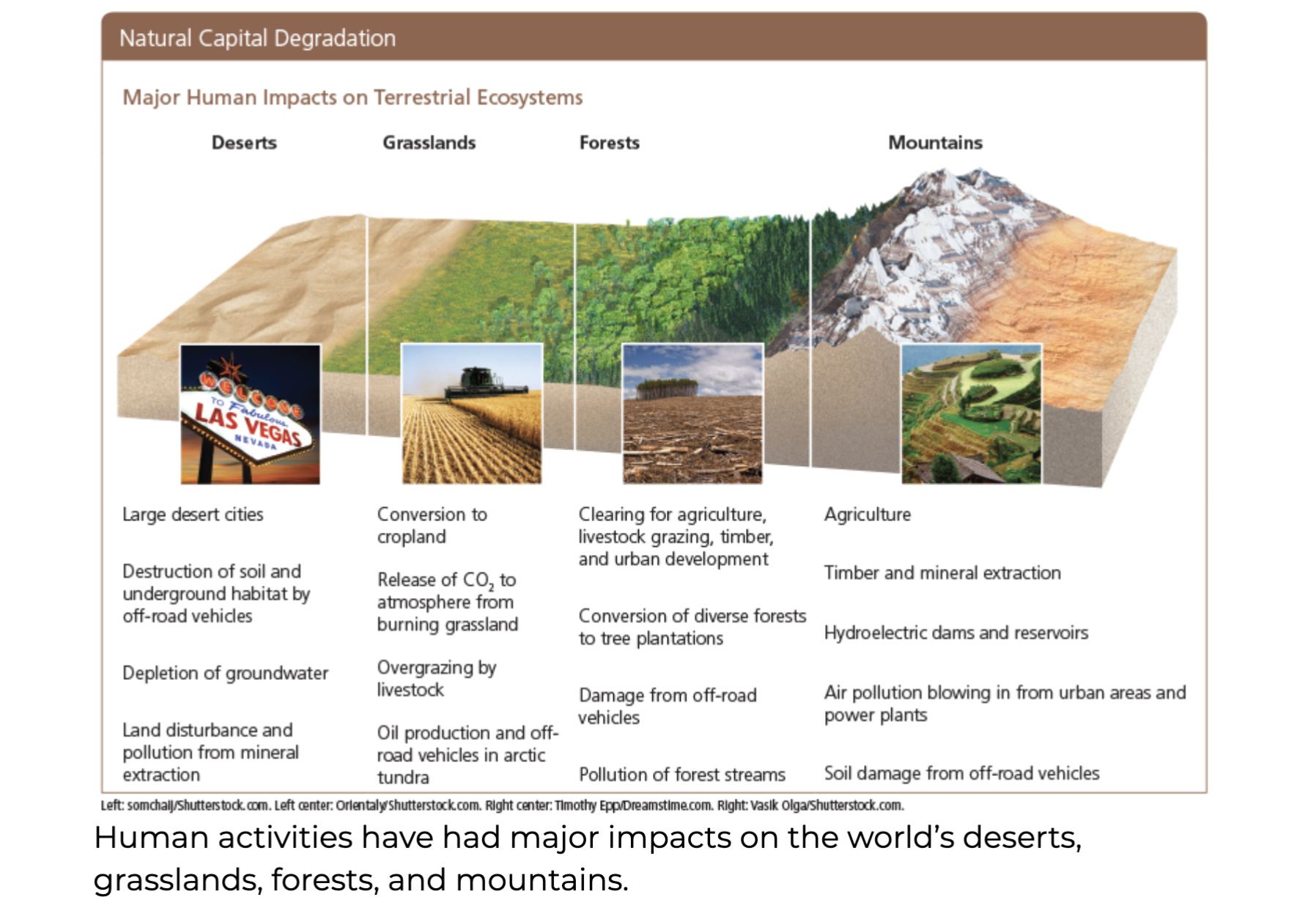
Mountains Play Important Ecological Roles
Help regulate earth’s climate
Glacial ice and show reflect some solar radiation back into space, cooling down the earth (albedo)
Much of the world’s population depends on mountains for fresh water.
Mountains can be islands of biodiversity that are surrounded by areas of less diversity.
They are often home to endemic species
7.3. What Are the Major Types of Marine Aquatic Systems and How Are Human Activities Affecting Them?
Oceans dominate the planet and provide vital ecosystem and economic services that are being disrupted by human activities.
Water Covers Most of the Planet
Marine biomes, called aquatic life zones, are either salt or fresh water in nature
Biodiversity in aquatic biomes is determined largely by salinity
Marine life zones (oceans, estuaries, coastal wetlands, and coral reefs)
Freshwater life zones (lakes, rivers, streams, and wetlands)
Oceans Provide Vital Ecosystem and Economic Services
The three major marine life zones:
Coastal zones
The open sea
The ocean floor
The Coastal Zone
Warm, nutrient-rich, shallow part of the ocean that extends from the high-tide mark on land to the edge of a shelf-like extension of continental land masses known as the continental shelf.
Examples
Estuaries - partially enclosed bodies of water where rivers meet the sea
Coastal wetlands (mangrove forests, marshes)- Land along a coastline, extending inland from an estuary that is covered with salt water all or part of the year.
What Services Do Coastal Aquatic Ecosystem and Economy Provide?
Filter out toxic pollutants, excess plant nutrients, and sediments and absorb other pollutants
Provide food habitats and nursery sites
Reduce storm damage and coastal erosion by:
Absorbing waves
Storing excess water produce by storms and tsunamis
Oceans Provide Vital Ecosystem and Economic Services
The abundance and location (water depth) of marine organism is determined by
water temperature,
dissolved oxygen content,
availability of light,
and availability of nutrients required for photosynthesis.
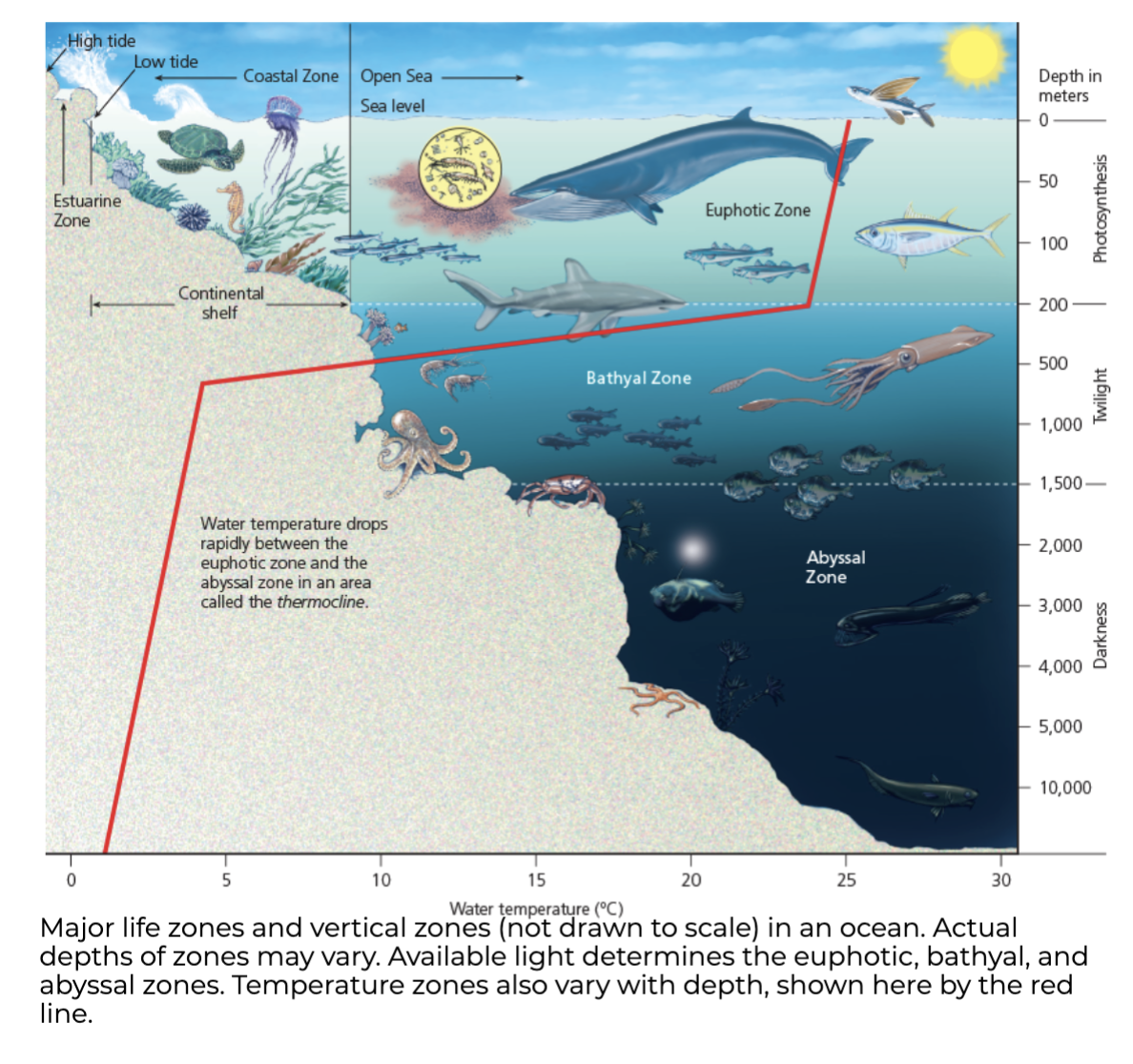
Open Sea and Ocean Floor
Open sea, beyond the continental shelves, is divided into three vertical zones:
Euphotic zone (brightly lit with phytoplankton that carry out photosynthesis, large fish)
Bathyal zone (dimly lit, no photosynthesis producers, smaller animals)
Abyssal zone (dark and very cold)
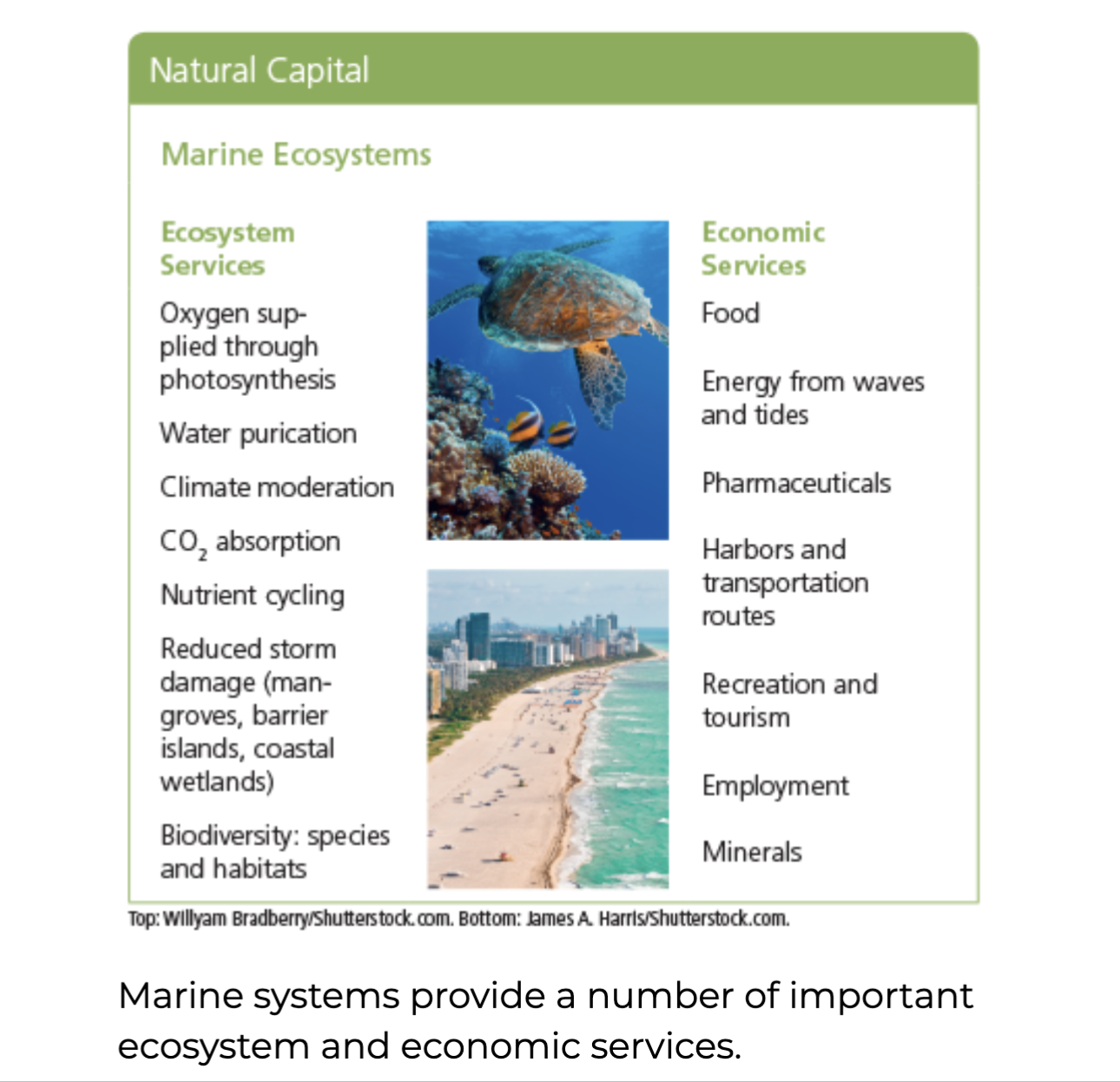
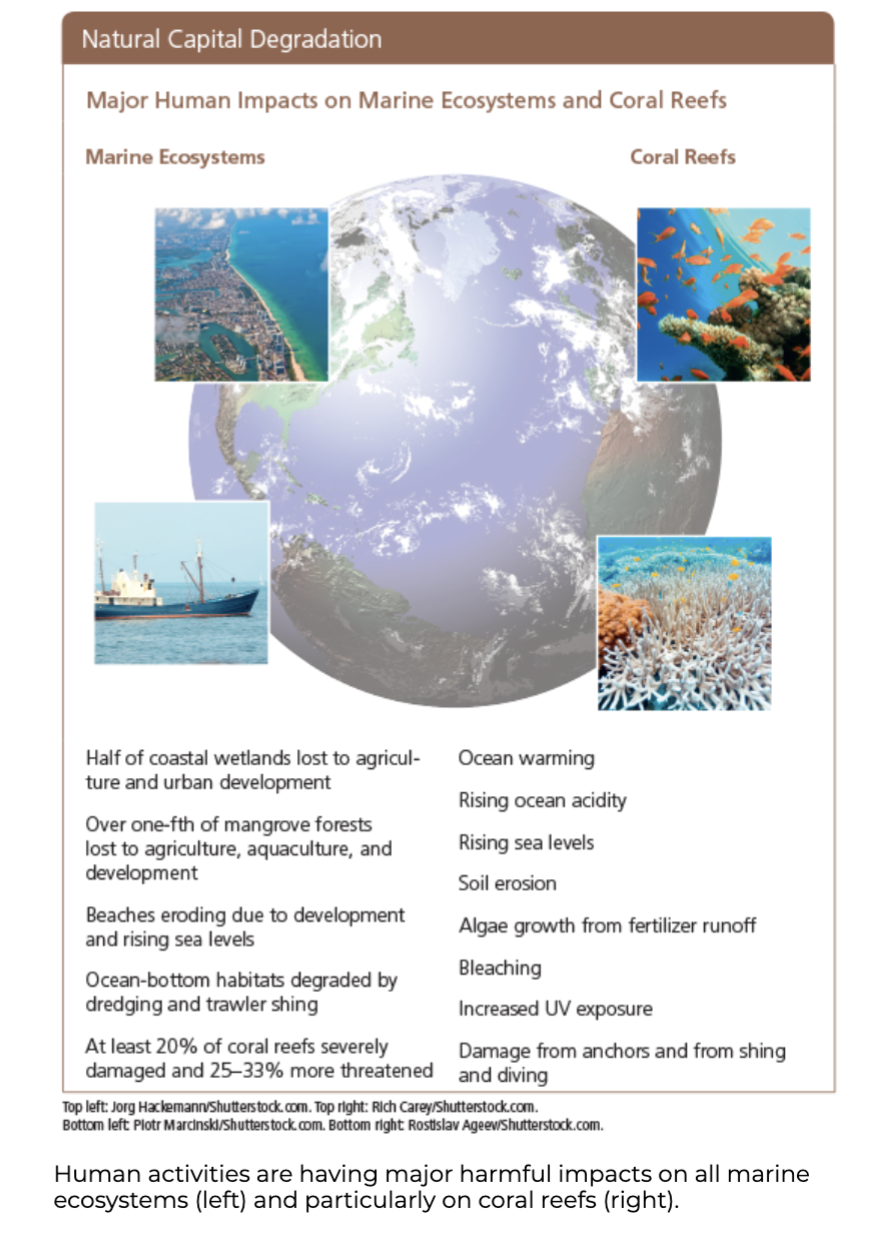
Human Impacts on Marine Ecosystems
Overfishing and destructive fishing practices
Climate change and ocean acidification
Pollution and marine debris
7.4. What Are the Major Types of Freshwater Systems and How Are Human Activities Affecting Them?
Freshwater lakes, rivers, and wetlands provide important ecosystem and economic services that are being disrupted by human activities.
Water Stands in Some Freshwater Systems and Flows in Others
Precipitation that does not sink into the ground or evaporate becomes surface water—freshwater that flows or is stored in bodies of water on the earth’s surface.
Surface water that flows into such bodies of water is called runoff.
A watershed, or drainage basin, is the land area that delivers runoff, sediment, and dissolved substances to a stream, lake, or wetland.
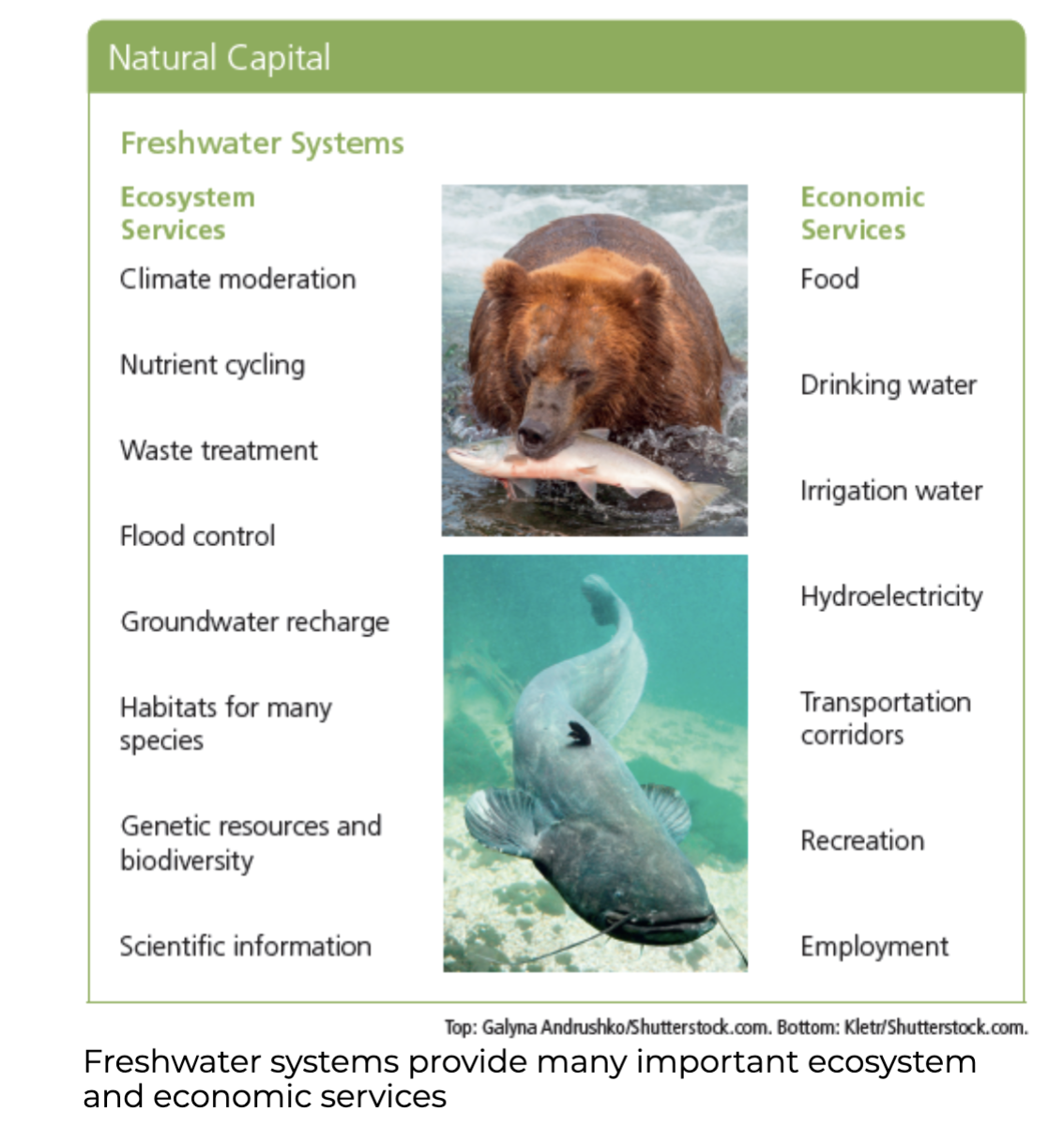
Freshwater
Freshwater aquatic life zones include standing bodies of freshwater and flowing systems.
Standing - lakes, ponds, and
inland wetlands
Flowing - streams and rivers.
Freshwater systems cover less than 2.5% of the earth’s surface.
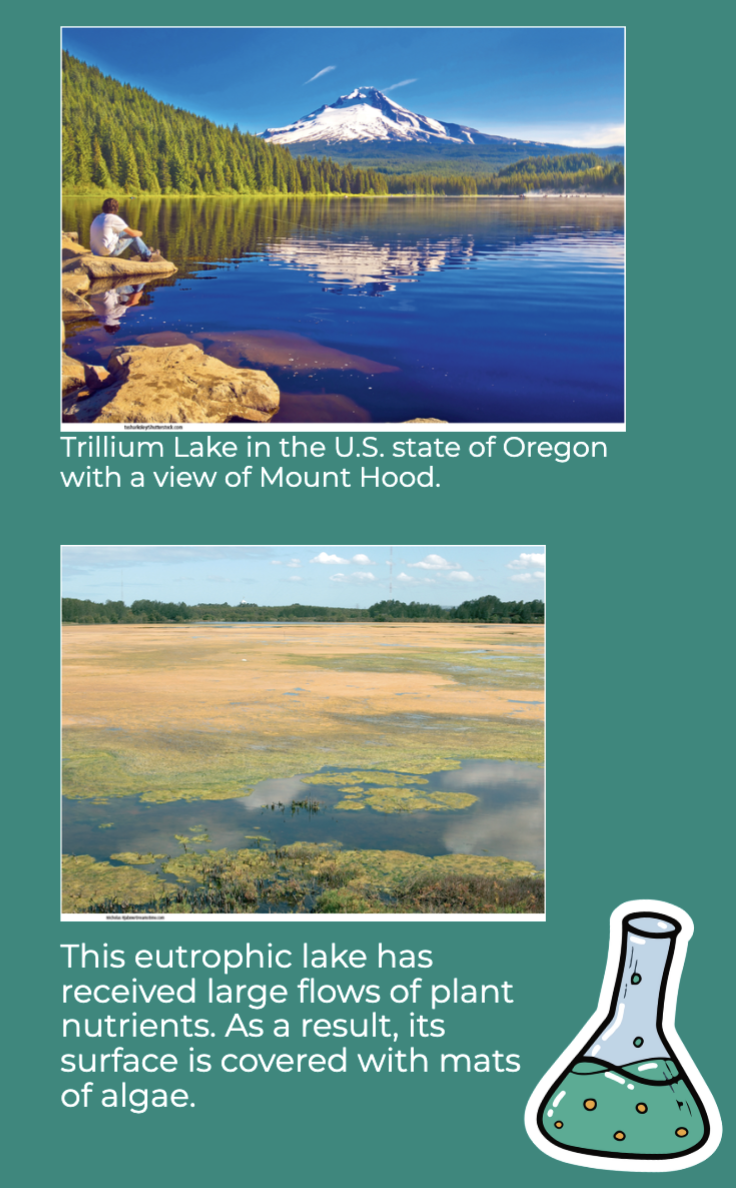
Lakes
Lakes are large natural bodies of standing freshwater formed when precipitation, runoff, streams, rivers, and groundwater seepage fill depressions in the earth’s surface.
Ecologists classify lakes according to their nutrient content and primary productivity.
oligotrophic - deep and steep-sided with a small nutrient supply
eutrophic lake - shallow and murky with a large supply of nutrients
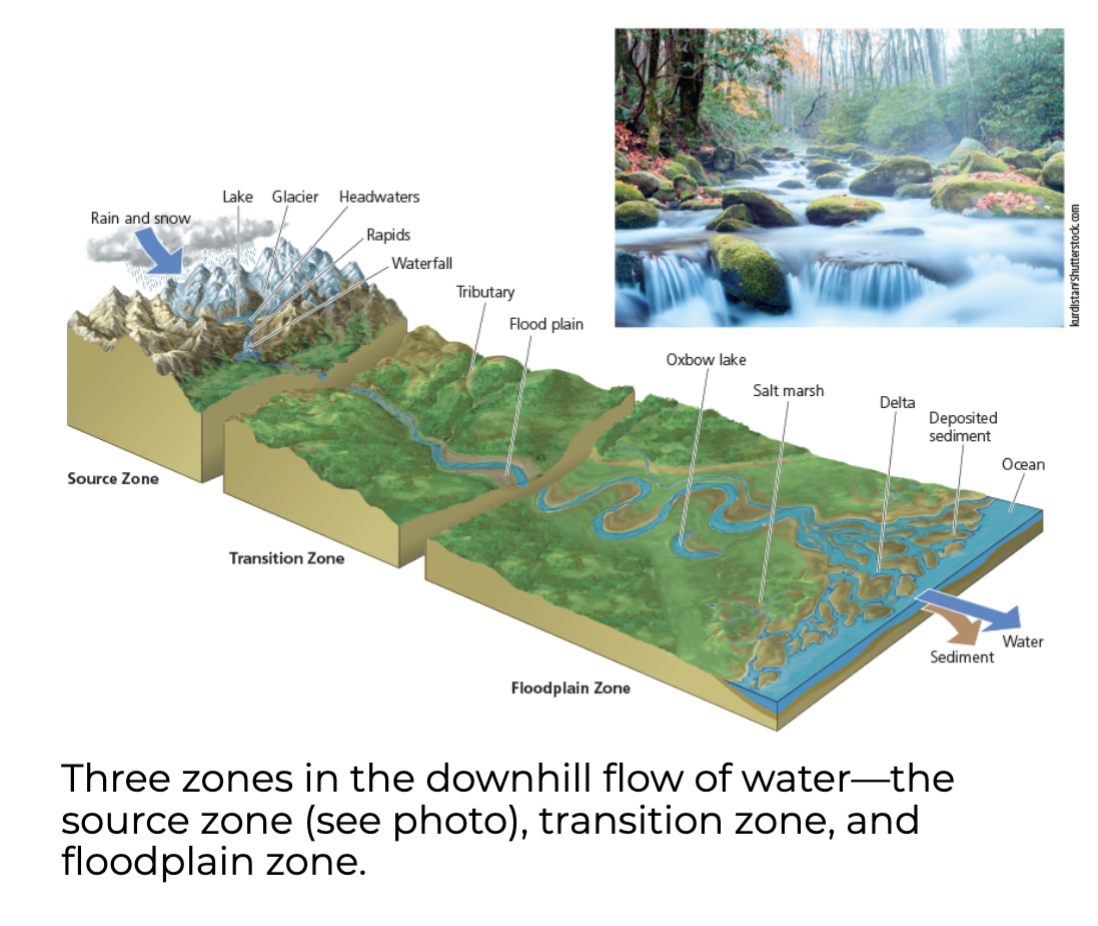
Freshwater Streams and Rivers
Streams flow through source, transition, and floodplain zones
Streams that flow downhill shape the land by erosion
Cutting valleys, creating sand, gravel, and soil
Deltas
Form at the mouth of the river from sediment the river has carried from upstream
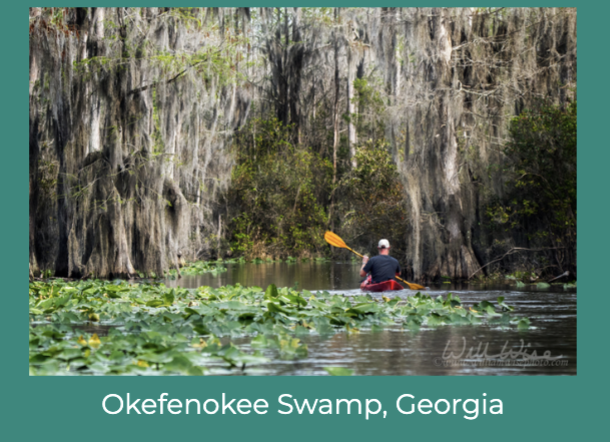
Freshwater Inland Wetlands
Inland wetlands are lands located away from coastal areas that are covered with freshwater all or part of the time. They include
marshes, swamps, prairie potholes (depressions carved out by ancient glaciers) and floodplains.
Vital sponges that provide ecosystem and economic services
Filter/degrade waste and pollution
Limit flooding and erosion
Sustain stream flow during droughts
Help to recharge groundwater aquifers
Maintain biodiversity
Human Activities Are Disrupting and Degrading Freshwater Systems
Water flow is restricted by dams and canals.
Water flow is disrupted by flood control levees and dikes.
Agricultural and urban pollution is added to freshwater systems.
Wetlands have been drained or filled in to grow crops or for construction of buildings.
Big Ideas
Differences in climate, based primarily on long-term differences in average temperature and precipitation, largely determine the types and locations of the earth’s deserts, grasslands, and forests.
Saltwater and freshwater aquatic systems cover almost three-fourths of the earth’s surface, and oceans dominate the planet.
The earth’s terrestrial and aquatic systems provide important ecosystem and economic services that are being degraded and disrupted by human activities.